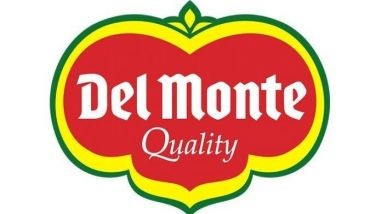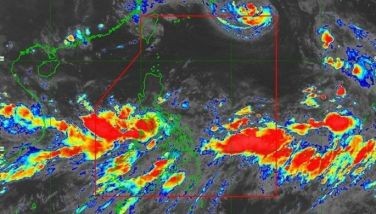DA unit moves to stamp out mango pulp weevil pest
August 21, 2005 | 12:00am
The Bureau of Postharvest Research and Extension (BPRE), an attached agency of the Department of Agriculture (DA) has launched an extensive study to exterminate the mango pulp weevil, a fruit pest that poses a threat to the local mango industry and limits the country’s potentials to expand its export market.
In its project called "Management of Pulp Weevil in Palawan", the BPRE said it has been surveying the mango-producing areas in the province to detect the presence of the dreaded fruit pest, which is also known as mango flesh weevil (Sternochetus frigidus).
In 1987, a national survey of 33 mango-producing provinces found that the mango pulp weevil exists in Palawan.
The Bureau of Plant Industry (BPI) eventually issued aministrative order placing Palawan under quarantine to prevent the spread of the pest.
The BPI declared the mango pulp weevil as a dangerous pest that poses a serious threat to the country’s $31-million mango exports industry.
The Philippines is considered as the world’s sixth largest exporter of mangoes, with total shipments amounting to $31.095 million in 2004.
Currently, the BPI prohibits the movement, transfer and carrying of mango tree, fruit or any part of it that is capable of harboring mango pulp weevil from Palawan to other islands of the country.
A Mango Weevil Detection Center was put up in the province to scan mango products and ensure that they are free from the weevil, which eat into the flesh of the fruit.
BPRE said there is a need to come up with an effective means of managing the mango pulp weevil to prevent its spread to other parts of the archipelago.
In its project done in collaboration with the DA in Palawan, the Southern Tagalog Experimental Research Center and the Office of the City Agriculturist, BPRE said they have conducted surveys on the distribution of mango pulp weevil in Northern Palawan as well as toxidity studies of candidate chemicals against the pest.
"Initial findings showed that mango pulp weevil was absent in the municipality of San Vicente, Northern Palawan," a BPRE report said.
"The presence of the pest to adjacent municipalities remains to be verified. Mapping out of the pest distribution in Palawan would facilitate formulation of control strategies in the near future," the report added.
Mango pulp weevil was first detected in Palawan in the 1980s but the island has since been placed under quarantine. The situation has limited the export of Philippine mangoes to the US and Australia. These important overseas markets have specifically required exports only from recognized pest-free area, which is the Guimaras Island consequently losing potential export earnings for Philippine farmers from other areas in the country that are known to be free from both diseases. All mangoes coming from all parts of the country except Palawan, have gained entry in Japan, Korea, New Zealand, China, EU, Canada, Middle East, among others.
In its project called "Management of Pulp Weevil in Palawan", the BPRE said it has been surveying the mango-producing areas in the province to detect the presence of the dreaded fruit pest, which is also known as mango flesh weevil (Sternochetus frigidus).
In 1987, a national survey of 33 mango-producing provinces found that the mango pulp weevil exists in Palawan.
The Bureau of Plant Industry (BPI) eventually issued aministrative order placing Palawan under quarantine to prevent the spread of the pest.
The BPI declared the mango pulp weevil as a dangerous pest that poses a serious threat to the country’s $31-million mango exports industry.
The Philippines is considered as the world’s sixth largest exporter of mangoes, with total shipments amounting to $31.095 million in 2004.
Currently, the BPI prohibits the movement, transfer and carrying of mango tree, fruit or any part of it that is capable of harboring mango pulp weevil from Palawan to other islands of the country.
A Mango Weevil Detection Center was put up in the province to scan mango products and ensure that they are free from the weevil, which eat into the flesh of the fruit.
BPRE said there is a need to come up with an effective means of managing the mango pulp weevil to prevent its spread to other parts of the archipelago.
In its project done in collaboration with the DA in Palawan, the Southern Tagalog Experimental Research Center and the Office of the City Agriculturist, BPRE said they have conducted surveys on the distribution of mango pulp weevil in Northern Palawan as well as toxidity studies of candidate chemicals against the pest.
"Initial findings showed that mango pulp weevil was absent in the municipality of San Vicente, Northern Palawan," a BPRE report said.
"The presence of the pest to adjacent municipalities remains to be verified. Mapping out of the pest distribution in Palawan would facilitate formulation of control strategies in the near future," the report added.
Mango pulp weevil was first detected in Palawan in the 1980s but the island has since been placed under quarantine. The situation has limited the export of Philippine mangoes to the US and Australia. These important overseas markets have specifically required exports only from recognized pest-free area, which is the Guimaras Island consequently losing potential export earnings for Philippine farmers from other areas in the country that are known to be free from both diseases. All mangoes coming from all parts of the country except Palawan, have gained entry in Japan, Korea, New Zealand, China, EU, Canada, Middle East, among others.
BrandSpace Articles
<
>
- Latest
- Trending
Trending
Latest
Trending
Latest
Recommended































